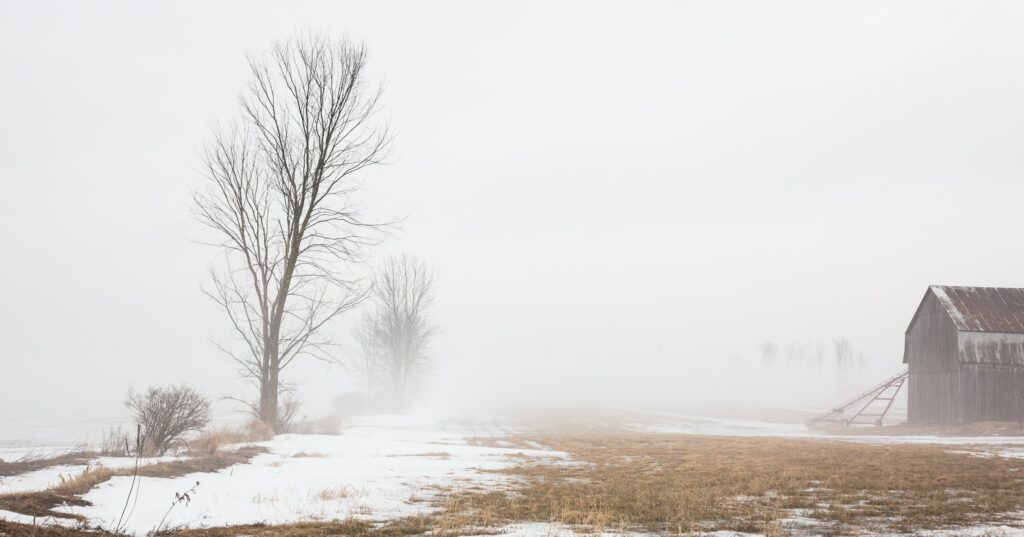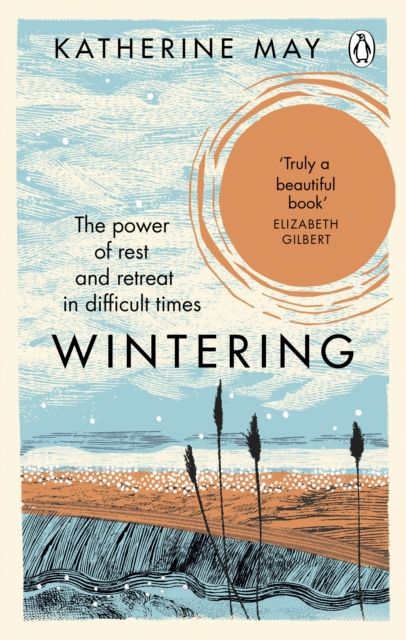I pick up the phone after one long and two short rings. It’s a bone chilling, snowy day on the prairie. It’s our always smiling, round faced neighbor, Mary Green, “ how are you wintering?”, she says. Mary and her husband Reg, are our closest neighbors a couple miles north on the grid road.
I must admit, I didn’t know what she meant, wintering, I’d never heard that expression before. This was many decades ago, and since then I have had many ways to experience wintering.

On the grain farm, animals and people slowed down, and the fields were in fallow, after the long long days of harvest. Looking out the windows at the swirling snow, I would wonder if our vehicles would start. And in years when the crops had been destroyed by hail or grasshoppers, it was a difficult settling into the season.
I was reminded of wintering times recently, when I listened to Krista Tippett interview Katherine May, author of Wintering: The power of rest and retreat in difficult times. I was struck by how soothed I was by May’s description of the naturalness of wintering, a cycle of life. She emphasized the importance of accepting and being with the difficult and dark times. Although we can’t choose when they will happen, we can choose how we move through them.
This pandemic year, with stay at home, work at home, school at home requirements has been very difficult for many. My experience has been quite cyclical through this period. At times my introverted sensitive self has appreciated the quietness and lack of social activity. And, other times I wake up tired or feeling despair, sitting with losses that have me wondering if I could lose my moorings.
I agree with May, that one of things we can do during the dark days of winter, is to make space for sadness and exhaustion, to know that we may lose ourselves, for awhile and to be accepting of that in ourselves and in others. This acceptance is an act of compassion.
I appreciated May’s other suggestions for moving through the drag of winter, … “I began to treat myself … with kindness and love. I assumed my needs were reasonable and that my feelings were signals of something important. I kept myself well fed, and I made sure I was getting enough sleep. I took myself for walks in the fresh air and spent time doing things that soothed me. I asked myself, what is this winter all about? I asked myself, what change is coming?”
I have reflected on how my moving through wintering might have changed since Mary Green’s call decades ago. It seems that slowing down was accepted then, in a way it is not now. I experience much more cultural pressure to do, do, do. There were few distractions then, one television channel, a radio station, and early on, no running water or sewer (certainly no Epson salt baths!).
Over the years, I have expanded my difficult-time toolkit. The practice of mindfulness, much like May’s description of accepting and being with the difficult and then moving on, has served me well. And I can be curious, but not attached to where this will take me. This has not been easy work. And I am grateful I have many more options for resting and restoring than I did wintering on the farm, or single parenting, working, or being in school. Decades of practice.
Clearly, not everyone can make space for sadness or what we might see as self care, especially those whose workloads or circumstances are daunting. But we can aim to accept where we are with kindness and find moments of rest or connection.
This leaves me hoping that you are wintering well.
We’d love to have you as part of our community. Sign up for our newsletter to get inspiring articles, news about workshops and events, and a copy of our ebook, “13 Practices for Brilliant Women: A guide for transforming intentions into action.” We hope you’ll follow us on Facebook to see what is going on in the Women in Leadership for Life world.

Nicely written, Linda. Very reflective and very apropos to where we find ourselves today. I hope you are well.
Thanks Doug. Yes, I am well and writing helps! I hope you are well too.